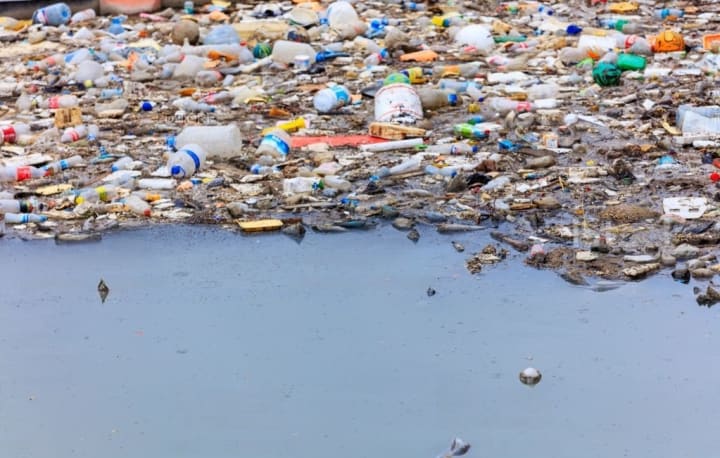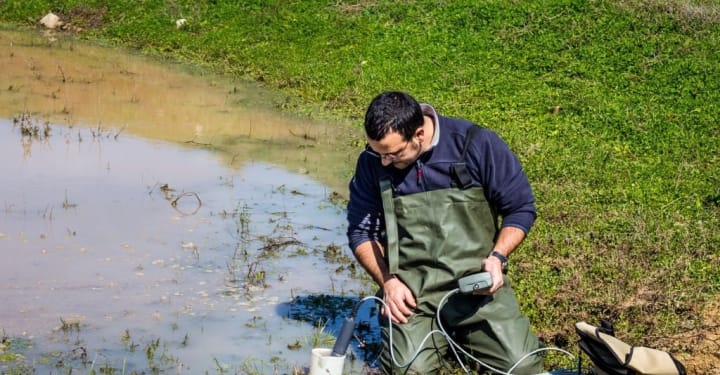Water Contamination and Shortage: A Global Crisis
The Importance of Sustainable Management and Technology in Addressing Water Contamination and Shortage

Water is essential to human survival, and access to clean and safe drinking water is a basic human right. However, according to the World Health Organization, more than 2.1 billion people worldwide lack access to clean and safe drinking water. The issue of water contamination and shortage is a global crisis that affects people in both developed and developing countries. In this blog post, we will explore the key issues related to water contamination and shortage, including the causes and effects of the problem, and the efforts being made to address it.
Causes of Water Contamination and Shortage
Water contamination and shortage have several causes, including pollution, poor management of water resources, poverty, and inadequate infrastructure. Industrial activities, agriculture, and urbanization are the main contributors to water pollution. Industrial activities such as oil drilling, chemical manufacturing, and mining release toxic chemicals into water sources, contaminating them and rendering them unusable. Agricultural activities such as irrigation, fertilization, and pesticide use also contribute to water pollution, as the chemicals used in these activities find their way into water sources.
Urbanization is another major contributor to water pollution. As cities grow, they generate more waste, which often ends up in water sources. Inadequate infrastructure for waste management and sanitation exacerbates the problem, as sewage and other waste are often discharged into rivers and other bodies of water without being properly treated. The result is water sources that are contaminated with bacteria, viruses, and other pathogens, making them unsafe for human consumption.
Poor management of water resources is also a major cause of water shortage. Water resources are finite, and as the global population grows, demand for water increases. In many parts of the world, water resources are overused and mismanaged, leading to depletion and scarcity. Agriculture is the main user of water around the world, accounting for 70 percent of water withdrawals. In some countries, agriculture uses as much as 75 percent of the available water, leading to depletion and contamination of water sources.

Effects of Water Contamination and Shortage
The effects of water contamination and shortage are far-reaching and can be devastating. One of the most immediate effects of water contamination is waterborne illness. When people consume contaminated water, they can become sick with diseases such as cholera, typhoid fever, and dysentery. According to the World Health Organization, waterborne illnesses kill more than 3.4 million people each year, most of them children under the age of five.
Water shortage can have equally devastating effects. In many parts of the world, people have to travel long distances to access clean water, which is often scarce. Women and girls are particularly affected by water scarcity, as they are often responsible for collecting water for their families. This can take up hours of their day, leaving little time for education or other activities. In some cases, girls may drop out of school altogether to help their families collect water.
Water scarcity can also have economic and social impacts. In many parts of the world, water is essential for agriculture and industry. Without access to water, farmers cannot grow crops, and industries cannot produce goods. This can lead to food shortages, job losses, and economic instability. Water scarcity can also lead to social unrest, as people compete for access to limited water resources.

Efforts to Address Water Contamination and Shortage
Despite the many challenges posed by water contamination and shortage, there are several efforts being made to address the problem. One of the most promising approaches is the development of new technologies for water treatment and conservation. Advances in technology have made it possible to treat contaminated water more effectively, and to reduce the amount of water used in agriculture and industry.
Another approach is to improve water management practices. This involves using water resources more efficiently, and managing them to combat water contamination, many countries have implemented strict laws and regulations on the disposal of waste, treatment of sewage, and discharge of pollutants. However, enforcement of these laws and regulations is often lacking, leading to continued contamination of water sources.
Another major issue related to water scarcity is poor management of resources. Many countries lack the infrastructure and resources necessary to properly manage their water supply. This includes things like efficient irrigation systems, adequate storage facilities, and proper maintenance of existing infrastructure. In addition, climate change is exacerbating water scarcity issues by altering precipitation patterns and increasing the frequency of droughts, further straining already limited water resources.
Agriculture is one of the primary causes of water depletion and contamination around the world. The use of pesticides, fertilizers, and other chemicals can contaminate water sources, leading to health problems for both humans and wildlife. In addition, the use of irrigation systems in agriculture often results in significant water loss due to evaporation and inefficient water delivery systems.
The industrial sector is also a major contributor to water scarcity and contamination. Many industries require large amounts of water for production processes, and the wastewater generated by these processes is often discharged back into water sources without proper treatment. In addition, the energy sector is also a significant consumer of water, particularly in the production of electricity. The use of hydroelectric power can also have significant impacts on water resources, particularly in areas where water scarcity is already an issue.
To address these issues, there have been significant efforts in recent years to develop technology to combat water contamination and reduce the rate of water depletion. One such technology is desalination, which involves removing salt and other minerals from seawater or brackish water to make it safe for drinking and agricultural use. While desalination is an effective way to produce clean water, it can be costly and energy-intensive, making it difficult for many countries to implement on a large scale.
Another promising technology is water reuse, which involves treating wastewater to make it safe for agricultural or industrial use. This can significantly reduce the amount of freshwater needed for these purposes and help alleviate water scarcity issues. However, there are still concerns about the safety of treated wastewater and the potential health risks associated with its use.
In addition to technological solutions, there are also efforts underway to improve water management and conservation practices. This includes things like better irrigation systems, rainwater harvesting, and water-efficient appliances. In some areas, communities are also working together to share water resources and develop sustainable water management practices.

Overall, the issue of water scarcity and contamination is a complex and multifaceted problem that requires coordinated efforts from governments, businesses, and individuals to address. While there are promising solutions on the horizon, there is still much work to be done to ensure that everyone has access to clean and safe water.
About the Creator
Leo Waitere
A passionate advocate for positive change in the world. Concerned citizen and public figure, who is committed to using this platform to raise awareness about the problems facing our planet.






Comments
There are no comments for this story
Be the first to respond and start the conversation.